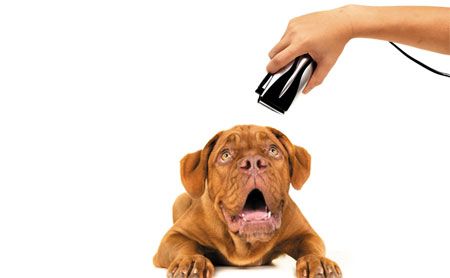''You're gonna shave WHERE?!''
Your clients may be fonder of Goldie's golden locks than you imagine. So we before you shave that gorgeous mane for an ultrasound exam, make sure you educate veterinary clients about their pet's new haircut.

Don't panic. Don't panic! EVERYONE JUST STAY CALM! (Photo: Shutterstock / MirasWonderland).
Ultrasound lets us peek deep into our patients and find disease processes faster and with more detail than ever before. In addition to doctors using them for diagnostics, technicians are able to use them for a variety of tasks that make our jobs not only more productive and helpful to the patient, but-in this technician's opinion-a lot more fun too!
Strangely enough, even with this wonderful technology one of the biggest issues that clients have with the use of the ultrasound is the new, err, “haircut” their furry friend receives when we perform an ultrasound exam. Shaving them the same as you would an exploratory surgery can come off to a client as quite a shock. So it's worthwhile to spend time to explain what you're going to do-and why. The trick is explaining this to clients so they not only understand the need, but also welcome it.
Don't make it negative by saying something like “We want to do an ultrasound, but we'll have to shave her belly. Is that alright?”
Do explain and educate clients for them to fully understand and accept their pet needs to be shaved. “To get the best images and to help us make the best diagnosis for Ferdinand, we'll be shaving his belly. This allows us to apply the ultrasound gel and get the most information from this test.”
Always remember: Our clients come to us for the right information. Let's explain, educate and guide them to the right decision-and take the fear out of an important diagnostic procedure.
Ann Johnson, LVT, is a veterinary technician at Hayfield Animal Hospital in Alexandria, Virginia.